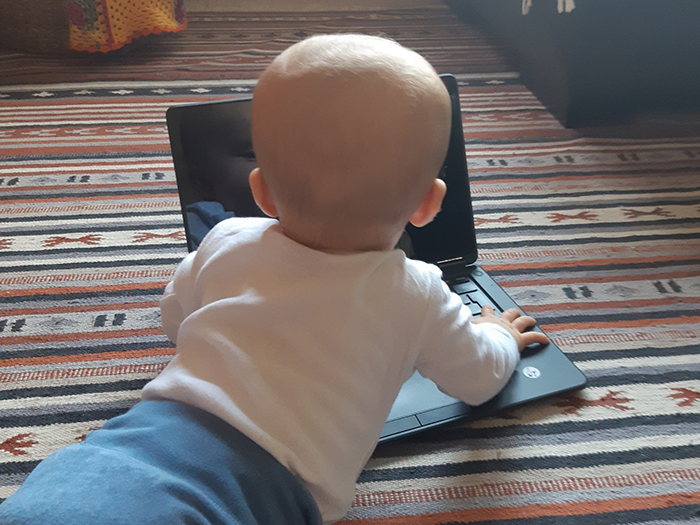Work and family are notoriously difficult to combine in the academic world, especially for female researchers. In this blog post, NPE team’s Visiting Researcher Hanna Lempinen shares her experience of spending six months at home with a surprise baby.

I originally offered to write this blog post as a part of a clever survival strategy that I thought would get me through the half a year at home with a surprise baby. I had the cunning plan that staying in writing mode and in touch with academic life at least somehow would make the months at home a more bearable experience for someone like me who had never planned on entering the fascinating world of reproduction. (People who do might not need to think of survival strategies or staying sane in the first place). However, it turned out that the six months just flew by, and I am writing this post now at my office desk “only” four-ish months late…
All babies, the people who have them and the things that these people find important and meaningful in life are different. This text reflects only my own experience of spending six unplanned months away from work in the early postdoctoral phase of my academic career. However, its themes may resonate with the experiences of others ending up in similar situations amidst the challenges of an academic world where work and family are notoriously difficult to combine especially for female researchers.
* * * * *
Stay in touch with your colleagues. In my case this meant continuing to have coffees, lunches, brunches and the occasional wines that we were already enjoying together with the workplace friends before my family leave. Staying up-to-date with the latest academic gossip and talking about other things than the baby kept me in touch not only with my dear co-workers but also with myself. I can only imagine that without regular activities outside the home the days with the baby would also have been really long and uneventful. Luckily the baby person also agreed on this and enjoyed our long lunches out in good company.
Let your partner take the baby person away every now and then. This part of course only applies if one has a partner; if not, often friends, relatives or paid childcare help can hopefully lend a hand. After the first couple of months we created the habit that on every Sunday my partner took the baby and spent the day visiting his parents or friends and taking long walks outside. This way I could take the whole day to focus on writing. On these days I was enormously productive: one of these writing Sundays turned into a successful foundation grant application.
On a related note, don’t take too much (new) stuff on your plate. Although we had an “easy” baby, having one in the house still means frequent nighttime wake-ups, varying amounts of sleep deprivation and constant interruptions to whatever you are trying to do in the daytime, academic or not. At least for me this meant that starting anything new or engaging in any kind of creative thinking was off the table. However, finishing stuff that I had already started before the maternity leave was both manageable and meaningful. Returning to work was also a lot more enjoyable after having tied all the loose threads.
Most importantly, do remember that you are on leave from work. This is an important point from at least two perspectives. The first one has to do with the baby and family life: there are good reasons why social security benefits are in many countries (relatively) generously allocated for enabling the parent(s) to stay at home for the first few months of new life. The second one has a more societal dimension. While maternity leave should allow one – both from the perspective of not losing one’s social security benefits as well as from the viewpoint of cultural norms dictating right and wrong kind of parenthood – to spend it in a way that reflects their own interests and personality, it should also not include the implicit obligation to continue working during leave. When making choices about our own lives and the lives of our families, we need to think carefully about what kind of (academic) working life and society we want to construct and promote through these choices.
Text and picture: Hanna Lempinen